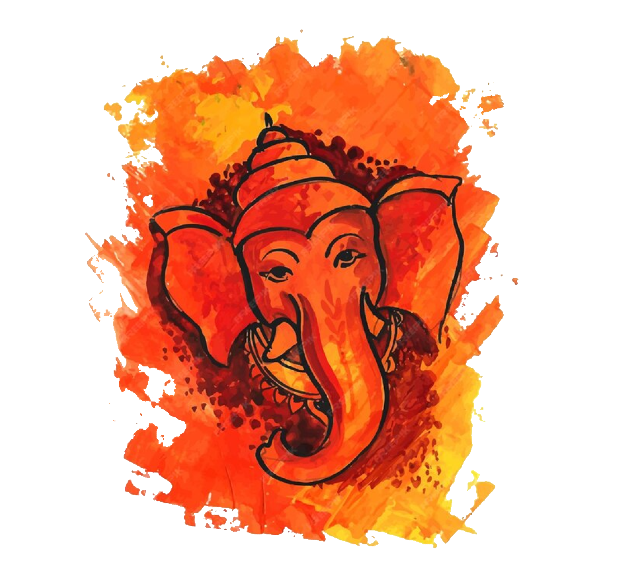
The Single-Syllable God
Ekakshara Ganapati
Exploring the Profound Significance of Ganesha’s Single-Word Mantra
Heading for Article :-
Ekakshara Ganapati : The Embodiment of the Sacred Syllable “Gam”
Introduction :
Ekakshara Ganapati is the seventeenth form among the 32 divine manifestations of Lord Ganesha. In this unique form, Lord Ganesha is associated with the sacred syllable “Gam,” representing the universal and primordial sound “Om.” “Eka” stands for “one,” and “Akshara” means “the letter,” together signifying a single syllable.
Iconography and Attributes :
Ekakshara Ganapati is distinguished by the following symbolic features:
Color: He is radiant and red in color, signifying his divine energy and power.
Single Syllable “Gam”: This form of Lord Ganesha is associated with the single syllable “Gam,” which is the seed letter of “Om.” This sacred syllable represents the universal sound and the essence of creation.
Three Eyes: Similar to his father, Lord Shiva, Ekakshara Ganapati has three eyes, symbolizing his cosmic vision and divine wisdom.
Crescent Moon: He adorns a crescent moon on his crown, signifying his connection to the lunar energy.
Padmasana Pose: The Lord sits in a yogic lotus posture (Padmasana) as a symbol of meditation and spiritual serenity.
Rat Mount (Mushika): He is seated on his divine vehicle, a rat (Mushika), which is depicted in proportionate size.
Four Arms and Hands :
Ekakshara Ganapati has four arms, each holding specific attributes:
Single Tusk: He holds his broken tusk, symbolizing his sacrifice and the ability to overcome obstacles.
Elephant Goad (Ankusha): He carries an elephant goad, signifying his control over the mind.
Noose (Pasha): Holding a noose represents his ability to bind and remove obstacles.
Cake Modaka: Sometimes, he is depicted with one of his hands showing the offering of a cake (modaka), which is his favorite sweet.
Worship and Significance :
Ekakshara Ganapati is particularly revered by those who seek to connect with the sacred sound “Om” and the power of the single syllable “Gam.” This form of Lord Ganesha is associated with meditation, spiritual growth, and inner transformation. Worshipers believe that by invoking Ekakshara Ganapati, they can gain control over their minds, overcome obstacles, and attain spiritual enlightenment.
Dhyana Mantra :
The Dhyana Mantra for Ekakshara Ganapati invokes his divine presence:
“Raktorakangangkasha Kusumayutah Tundialah Chandramoulih
Nethraih Yuktistribhih Vamanakaracharano Beejapundadhanah
Hastagra Kalusa Pashankasharada Varado Nagavaktrohi Bhoosho
Devaha Padamasano No Havatu Natsuro Bhootayae Vighnarajaha.”
This mantra reflects the divine radiance and spiritual significance of Ekakshara Ganapati.
Conclusion :
While there are no specific temples dedicated exclusively to Ekakshara Ganapati, paintings of all 32 forms of Lord Ganesha can be found in Thiruvananthapuram. Additionally, the temples in Chamarajanagar and Nanjangud in Mysore feature sculptures representing all 32 forms of Ganesha. Worshipping Ekakshara Ganapati is believed to offer spiritual enlightenment and mastery over the mind.
Editor – Kaalchakra Team
[ Note – Before Concluding anything as a Finale, Please Go through Original Scriptures of Vaidik Literature Written in Sanskrit and Also with Meaning of That time of Language. Because English is a Limited language to Explaining the Deeper Knowledge of Vaidik Kaal. ]
